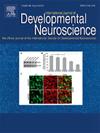Therapeutic Effect of LEV in a Propionic Acid-Induced Autism Model via AMPK/SIRT1 Pathway
Abstract
Objectives
In this study, we aimed to evaluate the therapeutic effect of levetiracetam (LEV), an antiepileptic drug used in the treatment of both focal and generalized epilepsy, in a propionic acid (PPA)-induced autism model by assessing social deficits, learning and memory impairments, and their neurochemical correlates. We further examined the involvement of the AMPK/SIRT1 signalling pathway as a potential molecular mechanism.
Material and Methods
Thirty male Wistar albino rats were allocated into three groups: normal control (n = 10), PPA + saline (n = 10) and PPA + LEV (n = 10). Autism-like features were induced by intraperitoneal PPA administration (250 mg/kg/day, 5 days). LEV was administered orally (100 mg/kg/day) for 15 days. Behavioural performance (three-chamber sociability test, open-field test, passive avoidance learning), biochemical markers (malondialdehyde [MDA], tumour necrosis factor-alpha [TNF-α], brain-derived neurotrophic factor [BDNF], AMPK, and SIRT1) and histopathological changes (neuronal counts in CA1, CA3, Purkinje cells; GFAP immunostaining) were evaluated.
Results
In the sociability test, social interaction time decreased by 51.6% in the PPA + saline group compared to controls (67.2% ± 2.4% vs. 32.5% ± 2.1%), while LEV increased it by 121.8% vs. PPA + saline (72.1% ± 4.5%). Open-field ambulation decreased by 83% in PPA + saline (17.3 ± 3.2 vs. 2.9 ± 0.8) and increased by 158% with LEV (7.5 ± 2.16). Passive avoidance latency decreased by 76% in PPA + saline (245.9 ± 17.5 s vs. 59.2 ± 20.8 s) and increased by 180% with LEV (165.7 ± 18.3 s). MDA levels increased by 187% in PPA + saline vs. controls (49.9 ± 1.4 vs. 143.5 ± 4.7 nmol/g protein) and decreased by 31% with LEV (98.6 ± 5.4). TNF-α increased by 1012% in PPA + saline (13.1 ± 0.9 vs. 145.8 ± 10.6 pg/mg protein) and decreased by 39% with LEV (88.4 ± 3.9). BDNF decreased by 52% in PPA + saline (5.21 ± 0.9 vs. 2.48 ± 0.3 pg/mg protein) and increased by 88% with LEV (4.66 ± 0.5). AMPK decreased by 62% in PPA + saline (113.5 ± 6.3 vs. 43.2 ± 7.5 pg/mg protein) and increased by 73% with LEV (74.8 ± 2.1). SIRT1 decreased by 75% in PPA + saline (4.65 ± 0.5 vs. 1.17 ± 1.1 pg/mg protein) and increased by 132% with LEV (2.72 ± 0.8). Histologically, CA1 neuronal counts decreased by 35% in PPA + saline (67.2 ± 2.04 vs. 43.8 ± 1.1) and increased by 38% with LEV (60.5 ± 1.3). CA3 neuronal counts decreased by 31% in PPA + saline (48.5 ± 3.2 vs. 33.7 ± 1.9) and increased by 31% with LEV (44.2 ± 0.8). Purkinje cells decreased by 53% in PPA + saline (26.2 ± 0.5 vs. 12.2 ± 0.8) and increased by 68% with LEV (20.5 ± 1.1). GFAP indices in CA1, CA3 and cerebellum were elevated in PPA + saline (31.6 ± 2.4 vs. 47.5 ± 1.2; 33.4 ± 1.1 vs. 48.2 ± 0.7; 21.2 ± 1.6 vs. 32.3 ± 0.9) and reduced with LEV (40.3 ± 0.6; 39.5 ± 0.8; 28.5 ± 1.4, respectively).
These therapeutic effects were accompanied by marked upregulation of the AMPK/SIRT1 pathway, which was suppressed in the PPA + saline group.
Conclusion
LEV treatment ameliorated PPA-induced behavioural, biochemical and histological impairments, likely via anti-inflammatory, antioxidant and neuroprotective mechanisms involving activation of the AMPK/SIRT1 pathway. These findings support LEV as a potential therapeutic candidate for autism spectrum disorder.


 求助内容:
求助内容: 应助结果提醒方式:
应助结果提醒方式:


